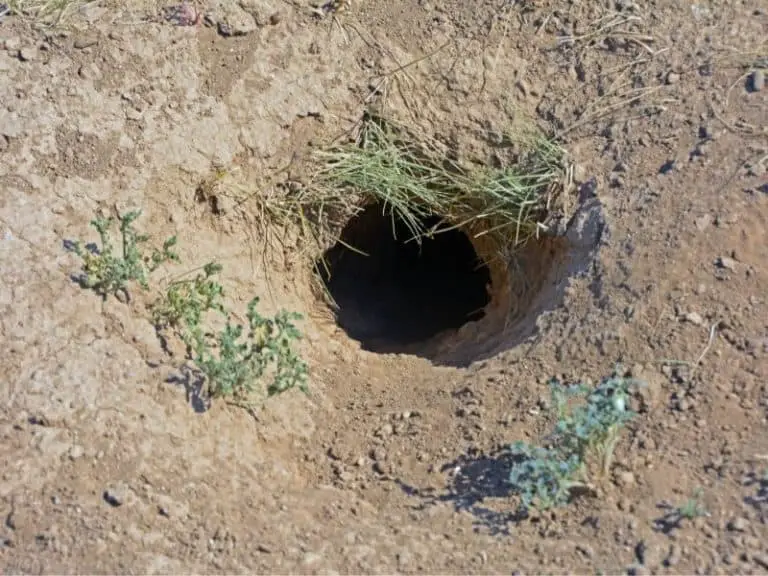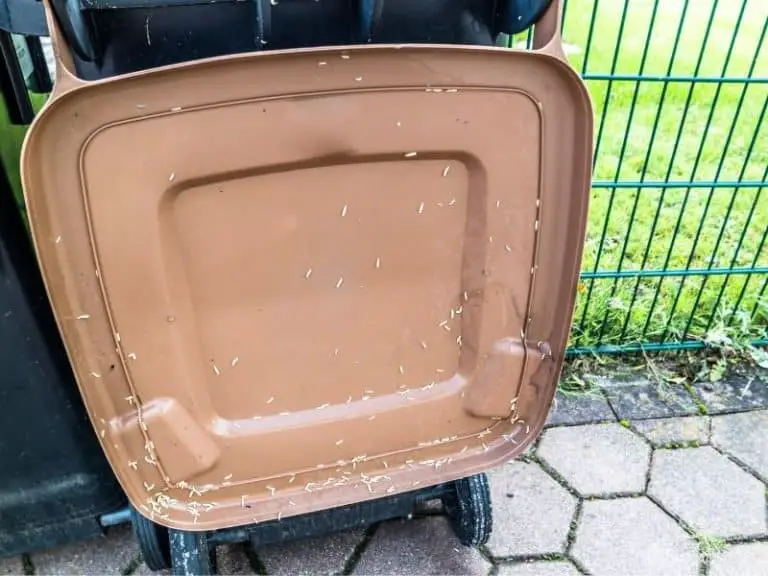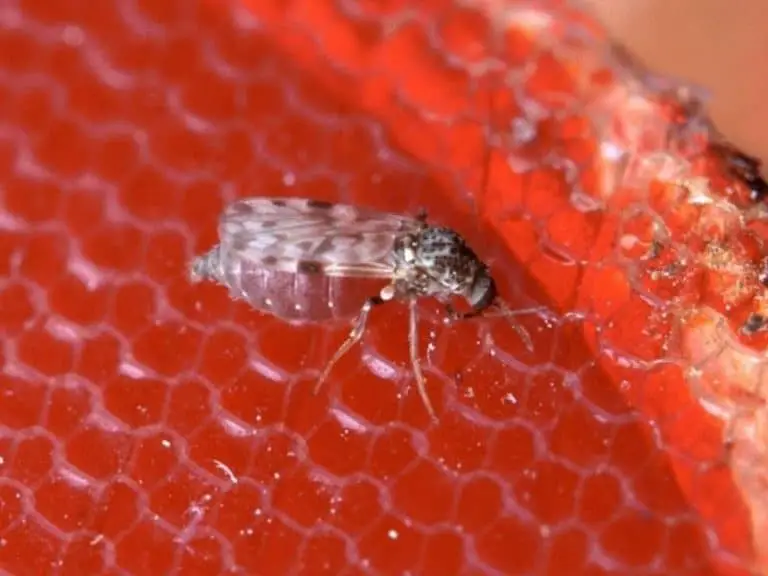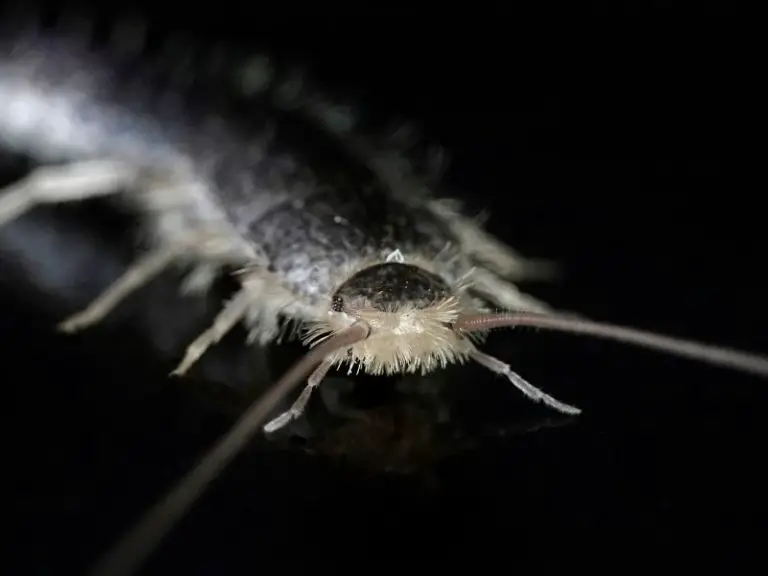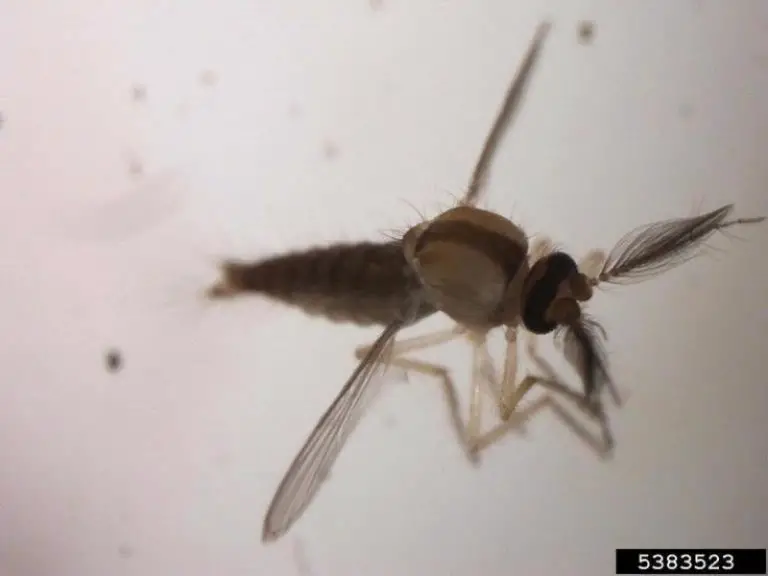How to Keep Critters from Getting Under Deck
Most wild and feral animals love to nest and stay in dark and dry places where they feel secure, and your deck may qualify as one because it is normally quiet, undisturbed, and can protect animals from their predators.
Several years ago I finally called a handyman to build a deck next to my house. Since the deck was only two feet above the surface, I asked him to install skirt boards to prevent animals from getting under.
The next year I found a stray cat with kittens in a basement window well. Apparently, the handyman did not close all gaps and the cat found a very safe place to raise its babies.
Keep reading to find out how I was able to get rid off them.
The following methods have been found to be effective and are worth discussing in more detail. Study and apply them so that you can keep these nuisance animals out of the underside of your deck.
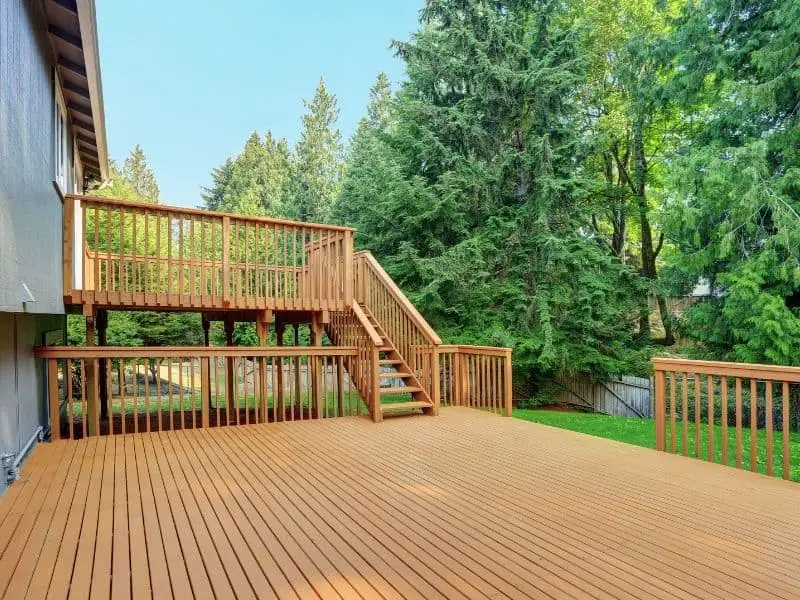
How To Keep Critters From Getting Under Your Deck
To keep critters from getting under your deck you have to identify them first with their tracks, droppings, and the damage they cause. Expose critters with chemical and water repellents. Remove attractants like food and cover and erect a barrier to prevent animals from getting under the deck.
Identify animals under deck
The space under your deck is a great place for many animals to rest, live, nest, and raise offspring. They can utilize this area as a cover in between feeding sessions in your yard and surrounding habitats.
Many of these animals have a nocturnal lifestyle, and so you may find it hard to see them.
You may only hear them as they scuttle about. You may also see signs of activity that indicate that they have indeed invaded the area.
The first thing you need to do in order to be able to implement sound and effective eradication is to identify what pest you are dealing with.
Some of the wild animals that are known to utilize spaces under porches, decks, and sheds are the following:
- Opossums
- Chipmunks
- Raccoons
- Feral cats
- Mice
- Rats
- Skunks
- Otters
- Woodchucks
- Rabbits
- Groundhogs
- Snakes
You will need to identify them first so that you will know the right solution to implement.
Some of the clues that can help identify what kind of animal is under your deck include paw prints or trail, fecal matter, and the kind of damage they inflicted.
These three clues are essential in identifying nocturnal, elusive, and cryptic animals that would be otherwise hard to detect.
Prints or tracks
For prints, you may be able to acquire a set of identifying prints by dusting the ground using flour, sand, or garden lime.
Apply these outside the openings that the animals appear to be using. Apply them during the afternoon and check the results in the morning.
These nuisance critters will likely have two or more points of entry and exit. They have multiple access points so that they have a backup escape option to keep from being trapped or cornered.
Droppings
Different animals may have different types of feces or droppings. They can help you indicate the animal living under your deck.
Try to determine the animal you are dealing with based on the shape, size, and composition of the droppings.
Snakes will have markedly different droppings because they resemble those of birds, with white, green, and brown or black portions.
Destruction of property
Property damage around your yard is also a good indicator of what nuisance animal is bugging you and your property.
Some of these animals have digging behavior, which they need to unearth grubs, earthworms, and insects under the ground.
Other animals wreak havoc on vegetable gardens and flower beds.
Rodents such as rats, mice, and squirrels chew on anything and everything in your home.
Snakes do not generally cause damage to property.

Evict the nuisance animals
The next step is to evict the animals.
One of the ways by which to prevent critters from entering the area under your deck is to physically block it entirely.
However, you should not block the area if you are not yet sure if there are animals inside.
If you think there are still critters in the area, you may inadvertently trap them within if you cover their exit and entry points without evicting them first.
To determine their presence, put sticks on the ground and perhaps sprinkle flour on their path. For small openings like narrow gaps and small holes, you may stuff the opening using newspaper.
Monitor the openings every day for a minimum of three days. You can determine that animals are using the entry points by the tracks they leave on the flour, the sticks being pushed over, and the newspaper being pushed out.
These are signs of activity that show that the area is inhabited. If these materials remain undisturbed, then your space may not be occupied.
When you already know the kinds of animals living under your deck, you can better determine the right strategy to effectively drive them out.
It is helpful to remember that a mother that has a nest with offspring will have greater resistance to being evicted unless circumstances become totally unbearable.
Create such an unpleasant condition for them that they will have no choice but to leave.
Remember that if you opt to use poison, it may be consumed by non-target animals.
In addition, the creature it kills might die at a corner or space that is unreachable to you, preventing you from removing the carcass and causing a terribly unpleasant odor that lasts for weeks as it rots.
The main principle behind an effective eradication measure is to take away the things or conditions that make the area ideal as a habitat.
What is it about your space that is appealing to them?
What biological need does it fulfill?
Determine these things and remove them.
Expose critters
Nuisance animals usually forage or hunt after dark to use the night as cover. One of the things that they like under your deck is the darkness and security that it offers.
You may clear away the vegetation surrounding your deck in order to let more light enter and increase the animals’ exposure and discomfort.
They need vegetation to hide. Allowing as much sunlight as you can encourage them to leave because it takes away their feeling of security.
You can also remove firewood, furniture, and other materials that they could use as cover and protection when they are moving in and out of your deck.
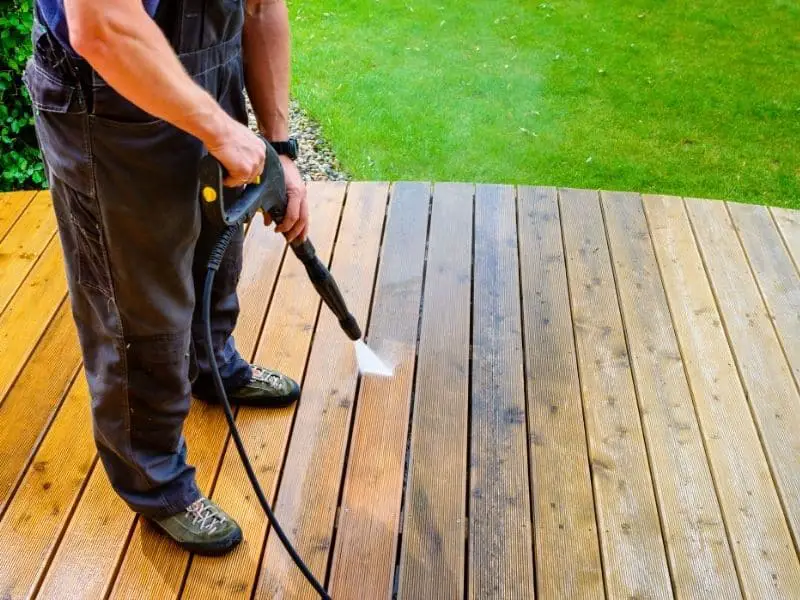
Make them wet
These animals also love the dry conditions under your deck.
You can use this knowledge to your advantage by letting your water hose just run next to your deck and beside entry and exit points.
This will cause the area to become temporarily water-logged or soggy, which makes it uncomfortable for animals.
Animals need their nests to be dry, so that wet conditions will make the area unsuitable as a place to live in.
Use chemical repellents
You can disrupt the animals’ sense of smell by spreading and applying various kinds of repellents at the same entrance and exit points which the animals use to access the space under your deck.
These repellents sometimes come in the form of granules, and others are in the form of sprays. You can sprinkle the granules or spray the repellent at the closest possible location where they are making their home.
It will cause a strong and constant pungent smell to prevail in the area, which will keep the pests uncomfortable and irritated.
You can apply the repellent in the early evening, about one to two hours after the sun has set, because nocturnal animals will most likely be out foraging or hunting by then and will be absent at the area.
Use water spray repellent
You can also use a motion-activated water spray repellent that activate whenever the animals walk near it. This startles them and may frighten them. Skunks and cats in particular do not like water and actively avoid it.
You may position the sprinklers near their access points so that they will squirt the critters whenever they enter and exit the area under your deck.
You may also use liquid repellent made of hot pepper, and spray it on the plants that some mammals like rabbits, opossums, and groundhogs consume. Hot pepper has a powerful flavor that burns their mouths.
Trap the critters
Sometimes, these nuisance animals still persist in your area and resist from leaving despite your efforts to discourage them.
If these stubborn creatures continue to stay, you can opt for the more direct and active approach of trapping them.
Live trapping should be safe both for you and the target animal.
Before you conduct trapping, read up on the local regulations in your area to determine what is allowed, including the actions you could perform once you have already caught the creature.
Size
You need to determine the right size of your trap depending on the animal you are after. The size of a trap for groundhogs is different from those used for rabbits. Select a trap that is specifically recommended for the pest you are targeting. Your trap should also catch the culprit securely and cleanly.
Bait
Many traps need bait in order to work, and the kind of bait varies depending on the target species. Slices of apple or lettuce would be useful in trapping rabbits and groundhogs.
Marshmallows, jelly, and fruit work well with skunks, raccoons, and opossums. Unsurprisingly, cat food is quite effective for feral cats.
Placement
The trap may be positioned near the usual exit points of the animals, so that the bait can have a higher efficacy, because the target animals will be hungry when they see the bait as they leave the area to look for food.
You may cover your traps with towels, burlap, or natural covering as camouflage so that the animal will feel more secure and comfortable in entering it.
Your cover can also keep skunks from spraying once they are caught.
Raccoons and cats will more likely enter your trap if the bottom is covered with a shallow grass clippings and soil layer.
Baited traps may have to be used for a number of nights before feral cats will get accustomed to them and take your bait. Keep in mind that you should not set your trap if you will not be able to check it the next morning.

Erect the deck barrier
You have now successfully cleared the area under your deck of these pesky critters.
Now you should think about how to keep them from going back. It is important to remember that you should always make them feel not at home by removing the elements that attract them.
Leave them nothing to eat
These include taking away food sources, such as outdoor pet dishes with leftover food, bird feeders, and trash bins without secure lids.
These food sources are usually the main reason animals start to help themselves to your property.
Pests want a home which is in close proximity to a readily available source of food. If you eliminate this source, there will be a much smaller likelihood that your deck will be invaded by animals.
Seal the area
A lot of decks have no barriers under them so that animals are free to enter and make a home for themselves. Some barriers are made up of flimsy decorative lattices that are of no practical use against pests.
A metal-mesh fence can be installed behind your decorative lattice in order to seal the spaces where the animals can squeeze through.
You may also use granular repellents as a preventive measure to create a barrier around the deck to further discourage would-be tenants. Replenish the granules every month.
You can install a mesh of hardware cloth measuring a quarter of an inch or galvanized fencing to cover openings which pests can use to crawl beneath.
Bury its lower edge a minimum of six inches below the ground to account for animals that can burrow their way under your barrier.
With the trench-&-screen method, you will dig a trench approximately one foot deep along the area’s opening.
Install a one-fourth to one-half-inch hardware cloth, lattice strips, or wire mesh. Make sure your material is one foot or more wider than the scope you intend to cover.
Galvanized material is ideal. To make the mesh aesthetic, you can opt to paint it. Otherwise, cover it with a lattice after it has been installed.
Related Post: Maggots in the Garbage
To prevent the animals from entering the area through digging, bend the lower six to twelve inches of your mesh outward into an L-shaped form, and put it in the trench with the bended end pointed outward.
If your material is lattice, bury its lower edge a minimum of two to four feet deep in order to effectively prevent animals from digging under it.
Afterwards, put back the soil into the trench, compress the soil and keep the mesh snug. Use U-shaped garden staples or nails to secure the mesh’s top edge to your deck’s underside.
Install a safety measure in the form of a one-way door at some point along your wire mesh to let any trapped animal leave the area. This one-way door will disallow them from going back in.

No dig method
If you want an option that does not require digging, you can use patio blocks in covering your opening instead of having to bury the bottom edge. In building foundations, patio blocks are used to prevent animals from digging around them.
Hardware cloth should be placed to cover the space, and then patio blocks are placed on top. You may use blocks measuring 8x16x1 inches.
Ensure that a slight slope exists in the ground to keep water running away from your blocks.
Blocks may severely prevent sufficient airflow in the area to keep it dry. It may be best to consult a building contractor if you intend to use patio blocks.
One-fourth to one-half-inch hardware cloth is used to fill gaps between the ground and your deck wall. Install a cloth that is two inches longer than the height of this gap.
Open method
If your deck is sufficiently high from the ground, it may be good to simply remove all shrubs, walls, and lattices from it to keep the space open and prevent would-be invaders from feeling secure about using it.
What I did to solve my problem?
First, I trapped the cat. I have a lot of traps for various creatures, but if you don’t have a live trap, you can contact the local animal control center and they will lend you one.
Once the mother cat was trapped, I removed the kitten and took the entire family to the county animal control center.
Then I closed the gap with a wire fencing, like this one:

Related questions
Does the underside of my deck need ventilation?
Wood needs to breathe and expel and absorb water or moisture. It is thus essential for this area to have proper ventilation, with good airflow on all four sides for wood to move evenly.
What material is best to use under my deck?
If the underside of your deck is prone to collecting water or moisture, you can use inorganic mulch like crushed rocks, river rocks, or gravel. Gravel does not decompose and allows water drainage.
Sources
- https://www.havahart.com/articles/strategies-repelling-nuisance-animals
- https://icwdm.org/decks-and-porches/
- https://www.pestwildliferemoval.com/deck-patio-trenching/
Photo credit: ©canva.com
Medical Disclaimer: TheHomePestControl is a digital publisher and does not offer personal health or medical advice. The contents of this website are not intended to substitute for professional medical advice, diagnosis, or treatment.
Affiliate Disclaimer: As an Amazon Associate, I earn from qualifying purchases made on our website. If you make a purchase through links from this website, I may earn a commission at no additional cost to you.

